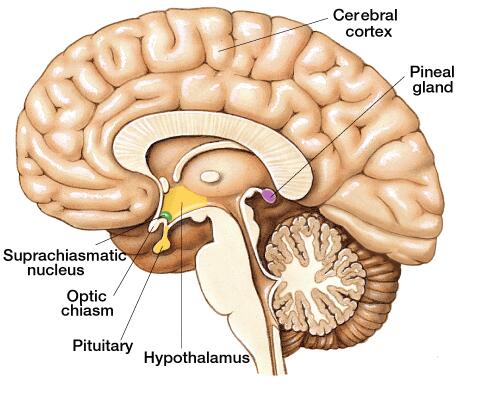Some hormone levels and physiological processes in the body seem to rise and fall in a regular pattern.
Some of these biological cycles correlate with the seasons. Other processes follow a regular 24-hour cycle.
Such daily cycles are referred to as circadian rhythms.

The function of melatonin hormone
Hormone that is subject to circadian rhythm is melatonin, a non-steroid hormone composed of a modified amino acid. Melatonin is produced by the pineal gland, a small, pine cone-shaped structure located deep in the centre of the brain.
Melatonin secretion slows when the retina detects light and action potentials flow along the optic nerve to the brain. The amount of light varies with time of day and seasonally, so melatonin secretion rises and falls in daily and seasonal cycles.
Melatonin production is highest during nighttime hours and diminishes considerably during the day.
As daylight fades, melatonin levels rise, producing the feeling of sleepiness.
Exposure to bright light at night can cause insomnia by altering melatonin secretion patterns.
Melatonin supplements are sometimes taken as a sleep aid or to help minimize jet lag. This condition arises when the internal clock of a person traveling across multiple time zones does not match up with the new local time.
Some studies indicate a connection between abnormal melatonin production and sleep disorders.
In addition, medical research suggests that abnormal melatonin production could be a factor in the development of mood disorders and depression.
Changes in melatonin secretion patterns trigger seasonal adjustments in behavior or appearance in many animals.